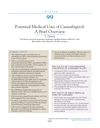
Search
for
Sort by
Research
30-60 / 164 results
research The Future In The Litter Bin – Bioconversion Of Food Waste As Driver Of A Circular Bioeconomy
Turning food waste into useful products is key for a sustainable economy.

research Minimal Scars for Scalp Surgery
New scalp surgery technique results in thinner, less visible scars.

research New Donor Excision Design for Better Hair Alignment in Hair Restoration Surgery
The new triangular flag-shaped design for incisions in hair transplant surgery provides better hair alignment and cosmetic appearance without extra scarring, especially for patients with specific hair directions.

research An Evaluation System to Enhance Patient Selection for Alopecia-Reducing Surgery
The evaluation system improved patient selection for hair loss surgery, leading to better results and satisfaction.

research Abstracts from the 4th Annual Student Medical Summit
The document concludes that more research is needed to reduce frequent hospital visits, addiction medicine education improves with specific training, early breast cancer surgery findings are emerging, nipple smears are not very accurate, surgery for older melanoma patients doesn't extend life, a genetic condition in infants can often be treated with one drug, doctors are inconsistent with blood clot medication, a certain gene may protect against cell damage, muscle gene overexpression affects many other genes, and some mitochondrial genes are less active in mice with tumors.

research Advertising and Fiction in The Pickwick Papers
The conclusion is that advertising is a key part of "The Pickwick Papers," reflecting the consumer culture of Victorian Britain.

research Studying the Genetic Predisposing Factors in the Pathogenesis of Acne Vulgaris
Genetics play a role in acne, but how exactly they contribute is not fully understood.

research Intricacies of the Single-Scar Technique for Donor Harvesting in Hair Transplantation Surgery
The article concludes that using the single-scar technique for hair transplants can result in a more attractive scar and that concerns about the technique can be managed with proper methods.

research A New Tool to Maximize Donor Harvesting With Safer Closure
The cross beam laser is a useful tool for safely measuring scalp stretchiness to improve hair transplant results.

research Commentary
The commentary suggests that using a single-scar technique for hair transplants can give good cosmetic results, but some surgeons hesitate to use it despite ways to address their concerns.

research Hair Pull Test: Evidence-Based Update and Revision of Guidelines
The normal range for the hair pull test is 2 hairs or fewer, and washing or brushing hair before the test does not affect the results.

research Three-Dimensional Reconstructions of Mechanosensory End Organs Suggest a Unifying Mechanism Underlying Dynamic, Light Touch
Dynamic, light touch is sensed through a common mechanism involving Piezo2 channels in sensory axons.

research Functional Complexity of Hair Follicle Stem Cell Niche and Therapeutic Targeting of Niche Dysfunction for Hair Regeneration
Understanding how hair follicle stem cells work can help find new ways to prevent hair loss and promote hair growth.

research Histological Study on the Effect of Hyaluronic Acid Injection on the Skin of Adult and Aged Albino Rats
Hyaluronic acid injections improve skin thickness and quality, protecting against aging in rats.

research Profile of Cosmetic Consultation in a General Dermatology Clinic
Most people getting cosmetic dermatology are young, educated, working women with a good income, mainly concerned about wrinkles and often choosing chemical peeling.

research Comparison of Three Strip Harvesting Techniques: Haber's, Pathomvanich's, and Ahmad's Techniques
Ahmad's sharp scissor technique reduces hair follicle damage without taking more time.

research Prevalence of Skin Diseases Among Hostellers Attending the Tertiary Care Hospital
Proper hygiene, adequate sleep, and self-care can reduce common skin diseases.
research Modulating Mechanosensory Afferent Excitability by an Atypical mGluR
A compound named ZCZ90 can increase muscle spindle firing, potentially helping treat muscle spasms and hypertension.

research Iron Deficiency Anemia Pruritus: A Review with Proposed Mechanisms of Action
Iron deficiency anemia can cause itching, which often improves with iron supplements.

research Potential Medical Uses of Cannabigerol: A Brief Overview
CBG may help with various medical conditions but needs more human research to confirm safety and effectiveness.

research CAG Repeat Testing of Androgen Receptor Polymorphism: Is This Necessary for the Best Clinical Management of Hypogonadism?
Testing for CAG repeat polymorphism in the androgen receptor gene is not currently recommended for managing hypogonadism.

research Combining Follicular Unit Extraction and Scalp Micropigmentation for the Cosmetic Treatment of Alopecias
FUE and SMP together can effectively treat hair loss, needing fewer procedures.

research On Photo-Stability of Oxybenzone
Estrogen receptors may not affect mouse hair growth as previously thought, and oxybenzone in sunscreen is stable in sunlight.

research The Art of Repair in Surgical Hair Restoration – Part II
Successful surgical hair restoration requires careful planning, precise execution, and proper aftercare, using techniques like follicular unit transplantation and correct hair angling for best cosmetic results.

research Melanin Pigmentary Disorders: Treatment Update
Treatments for melanin disorders exist, but more effective options needed.

research Dataset From the Uniaxial Tensile Testing of Human Curly Hair Fibers Under Different Conditions
Curly hair's strength and flexibility vary with moisture and temperature.

research Complications of Liver Transplantation: A Perioperative Perspective
Liver transplant can lead to neurological, pulmonary, cardiovascular, and renal complications, with older patients facing higher risks.

research Measurements of Tension on Wound Edges After Strip Harvest Surgery
Wound tension after hair transplant surgery increases with strip size and is higher on the sides, affecting scarring.

research Hair Weathering: Degeneration of Hair by Environmental and Cosmetic Factors
Avoid chemical and physical damage to protect hair.